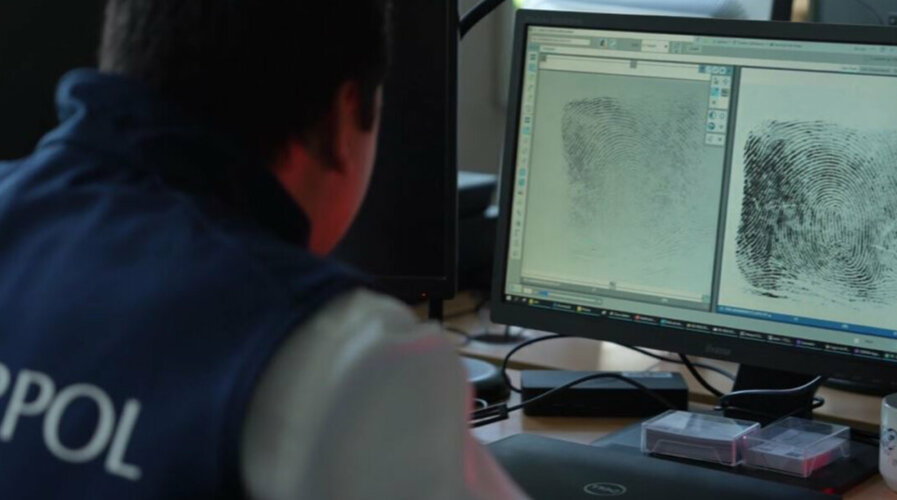
INTERPOL finds new ways to capture its most wanted criminals.
Biometric tool from INTERPOL is a game changer in capturing most wanted criminals
- The new biometric hub from INTERPOL targets and captures world’s most wanted.
- Revolutionary MBIS 5 by INTERPOL & IDEMIA reshapes global border and police operations.
- INTERPOL’s 100th anniversary was marked by the launch of the game-changing BioHub for security.
On its 100th anniversary and 91st General Assembly, INTERPOL, the world’s largest international police organization, announced the launch of its enhanced BioHub, powered by IDEMIA’s most advanced multibiometric identification system (MBIS). This development is set to revolutionize global law enforcement capabilities.
The latest version, MBIS 5, integrates new-generation algorithms to provide higher matching accuracy, quicker response times, and a user-friendly interface. It has been operational since October 2023, significantly enhancing the identification of potential Persons of Interest (POIs) in police investigations. This marks its first deployment phase, focusing on improving investigative processes.
Expanding border security with advanced biometrics
The second phase of deployment, planned over the next two years, will extend the system’s application to border control points. It’s poised to perform up to 1 million daily forensic searches, including fingerprints, palm prints, and portraits. This expansion will position it as the market’s top-performing automated biometric identification system, showcasing its robust capacity for enhancing border security.
IDEMIA’s commitment to leading the biometric technology sector is evident in its consistently top-ranked identity and security technologies. Notably, IDEMIA is ahead in the biometric tech race, covering critical areas like iris, fingerprint, and face recognition. The National Institute of Standards and Technology’s (NIST) latest test results highlight IDEMIA’s exceptional expertise and solution efficiency, combining accuracy and equity.
In action: how the INTERPOL Biometric Hub can capture some of the most wanted
In a recent INTERPOL operation, the effectiveness of the new Biometric Hub was showcased. A fugitive migrant smuggler, using a false identity, was intercepted during a police check in Sarajevo, Bosnia and Herzegovina. This arrest was part of INTERPOL’s Hotspot initiative, which employs biometric data to detect individuals attempting to cross irregular border points.
The smuggler, wanted on organized crime and human trafficking charges since 2021, was identified through the Biometric Hub, which checked his biometric data against INTERPOL’s global databases. When run through the system, his photograph flagged him as wanted in another European country, leading to his arrest and pending extradition.

A wanted migrant smuggler was subject to a police check. (Source – X).
Cyril Gout, INTERPOL’s director of operational support and analysis, emphasized the challenge for fugitives in altering biometric data, underscoring the reliability of biometrics in identifying individuals. He pointed out that the Biometric Hub lets law enforcement officers immediately assess if a person poses a security risk, greatly enhancing the efficiency of police checks and security operations.
The BioHub is underpinned by a ‘biometric core’ that consolidates INTERPOL’s existing fingerprint and facial recognition databases with a matching system developed by IDEMIA. This comprehensive system is not only essential for border screenings but also for regular police operations within countries. Over the next two years, the BioHub will be progressively rolled out to border points and frontline officers across INTERPOL’s membership, expected to conduct up to 1 million forensic searches daily.
The BioHub represents a significant advancement from previous checks against INTERPOL’s biometric databases, which involved separate, multi-step processes and human handling. Now, officers can submit data through a single interface that swiftly provides results and allows monitoring of request status. Human review by INTERPOL’s forensic experts is required only when the quality of captured biometric data falls below a designated threshold, ensuring the accuracy and integrity of matches.
The BioHub enhances data governance, adhering to INTERPOL’s robust data protection framework. Biometric data used in searches is not added to criminal databases, is not visible to other users, and data that does not result in a match is deleted following the investigation, respecting data privacy and integrity.
The Biometric Hub, first presented to INTERPOL’s membership at a conference in Singapore, was rolled out in October and is now accessible to all 196 member countries. This global accessibility signifies a significant step in enhancing security and law enforcement efficiency worldwide.
INTERPOL, encompassing 196 member nations, facilitates global law enforcement collaboration to enhance world safety. Its sophisticated technical and operational support infrastructure tackles the complex challenges of 21st century crime.
Facial recognition technology has significantly evolved, offering new avenues for identifying individuals and solving crimes. In 2016, INTERPOL adopted IDEMIA’s facial recognition capabilities to establish the INTERPOL face recognition system (IFRS). The IFRS, encompassing face images from over 170 countries, has aided in identifying thousands of terrorists, criminals, fugitives, POIs, and missing persons since its inception. In 2019, INTERPOL extended its agreement with IDEMIA to upgrade the IFRS to an MBIS.
Two decades of INTERPOL and IDEMIA
IDEMIA’s partnership with INTERPOL dates back to 1999, starting with delivering the automated fingerprint identification system (AFIS). This system streamlined cooperation among member country police forces, offering access to global police tools and services, including forensics and the exchange of fingerprint and forensic data, bolstering international investigations.
Through AFIS, member countries can access, submit, and cross-check records via INTERPOL’s secure global police communication network.
Cyril Gout highlighted that as criminals employ increasingly innovative methods to evade capture, law enforcement must equally adopt the latest technological advancements, particularly in biometric security, to counter transnational crime effectively. “INTERPOL’s enhanced partnership with IDEMIA will further help our member countries better protect their borders and communities,” Gout added.
Matt Cole, IDEMIA’s group executive vice president of public security and identity, expressed pride in renewing their collaboration with INTERPOL, emphasizing their commitment to global safety. This project underlines a robust 20-plus-year partnership.
“With the delivery of the new MBIS, developed thanks to our strong dedication to R&D, INTERPOL will have access to cutting-edge fingerprint, palm print and face identification technologies, enabling it and member countries to identify persons of interest faster than ever before. We look forward to many more years of supporting INTERPOL to ensure the safety of potentially billions of citizens around the world,” Cole explained.
READ MORE
- Safer Automation: How Sophic and Firmus Succeeded in Malaysia with MDEC’s Support
- Privilege granted, not gained: Intelligent authorization for enhanced infrastructure productivity
- Low-Code produces the Proof-of-Possibilities
- New Wearables Enable Staff to Work Faster and Safer
- Experts weigh in on Oracle’s departure from adland




